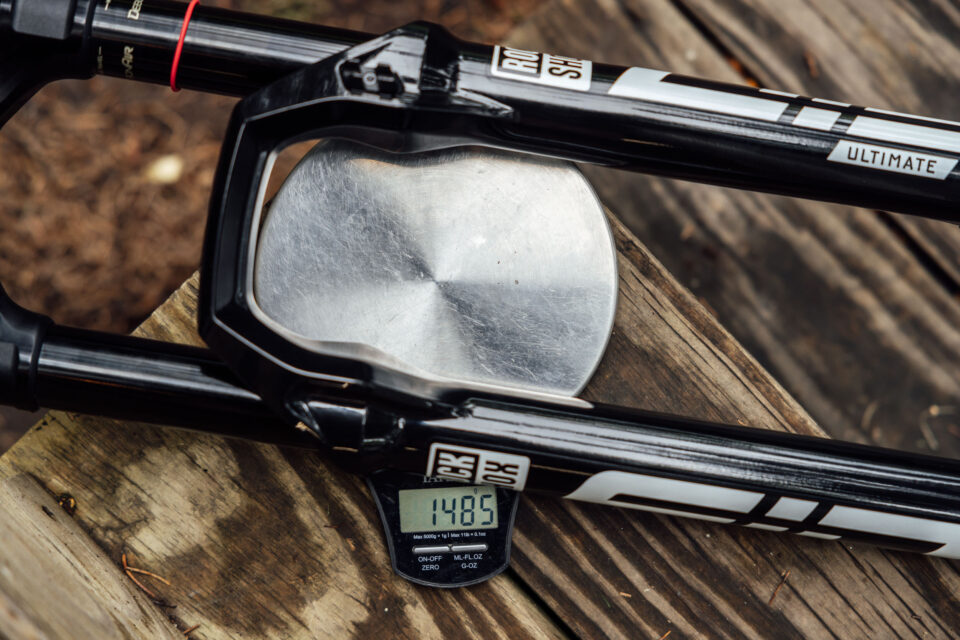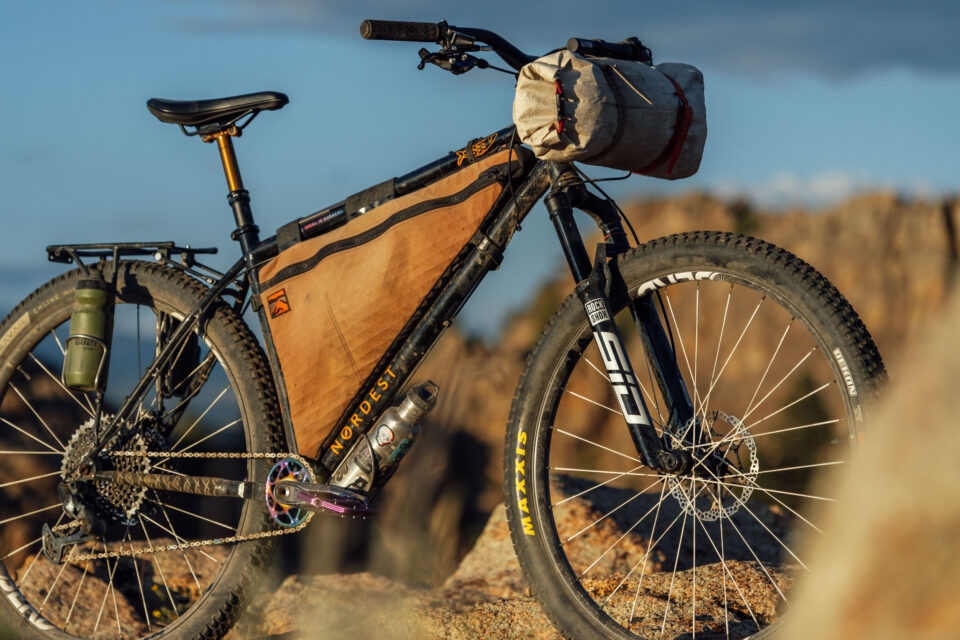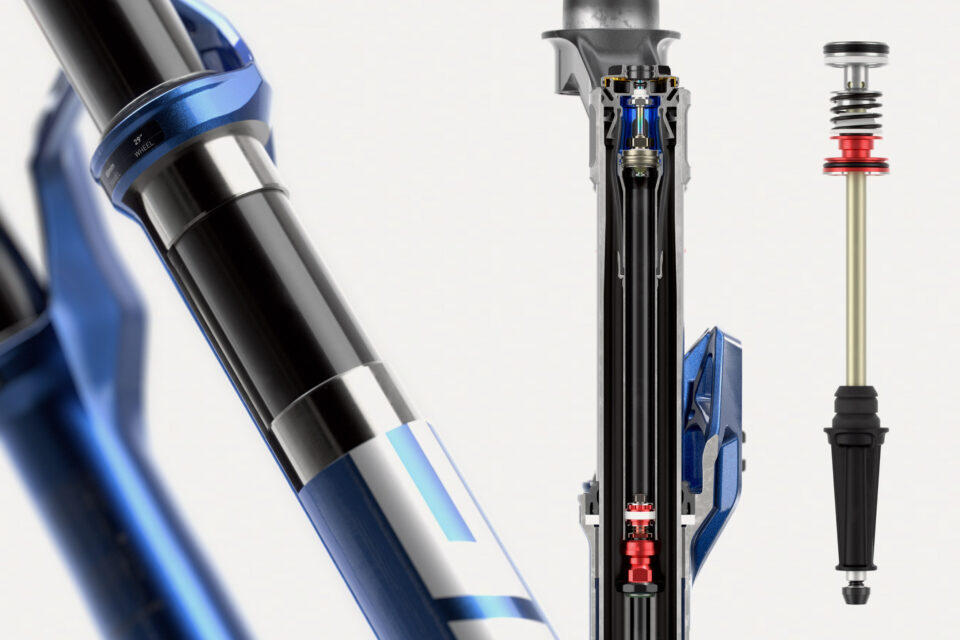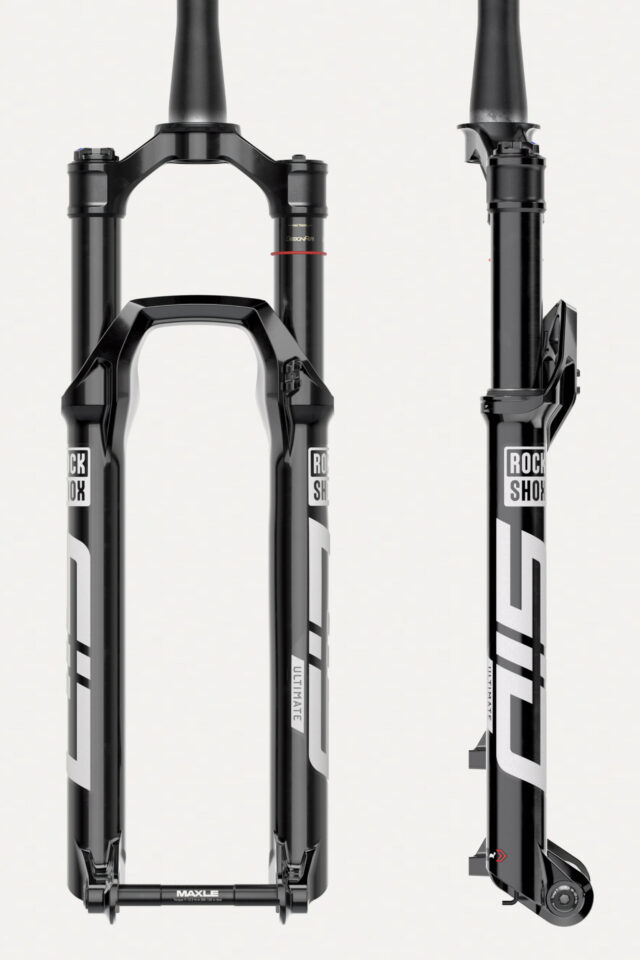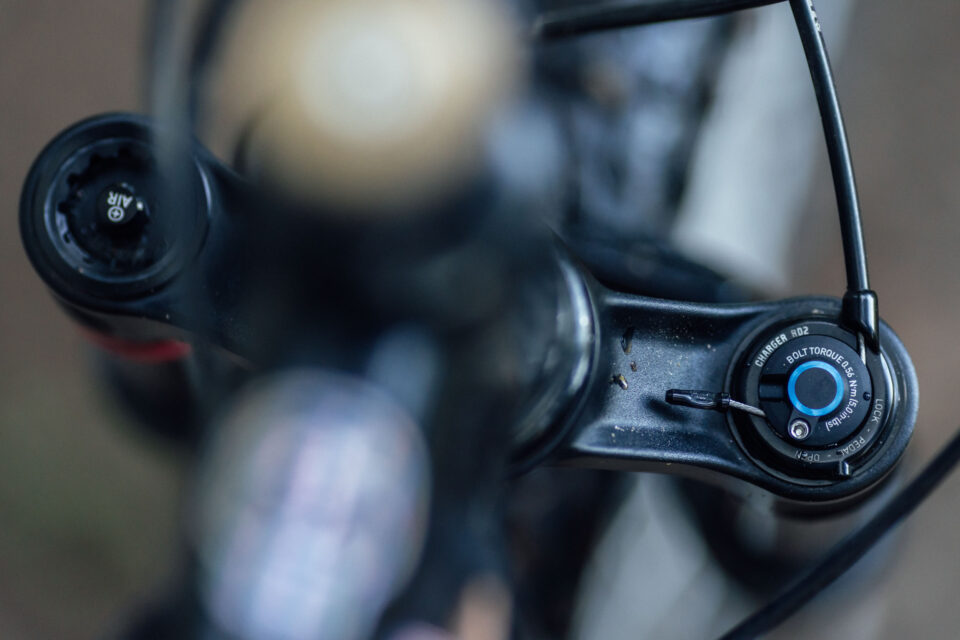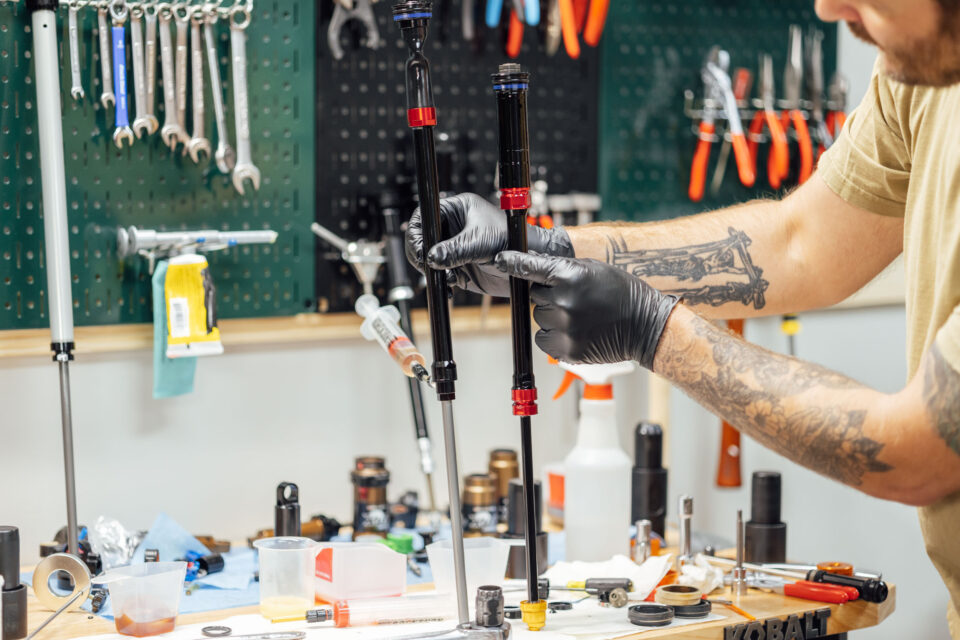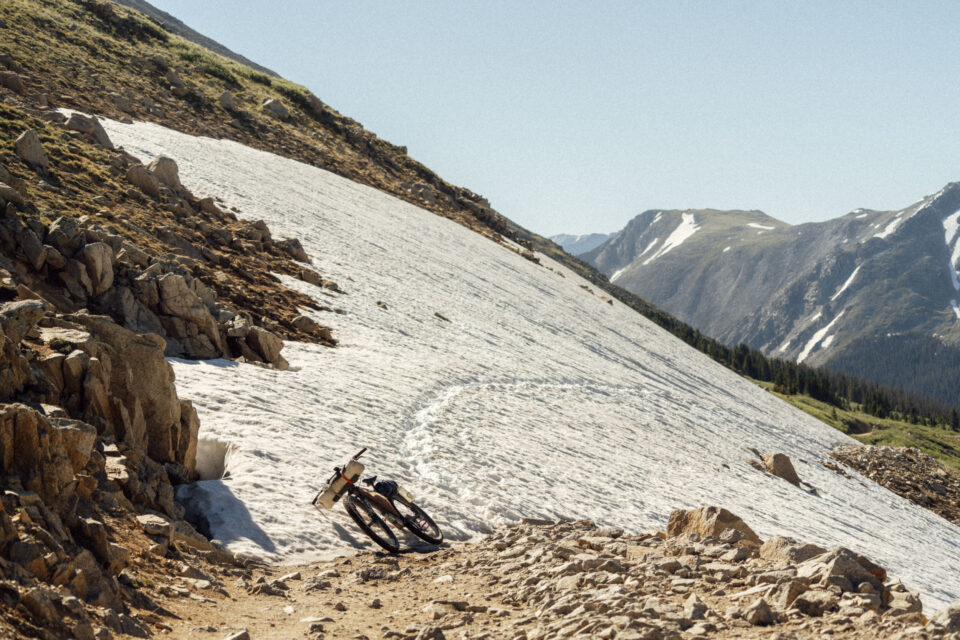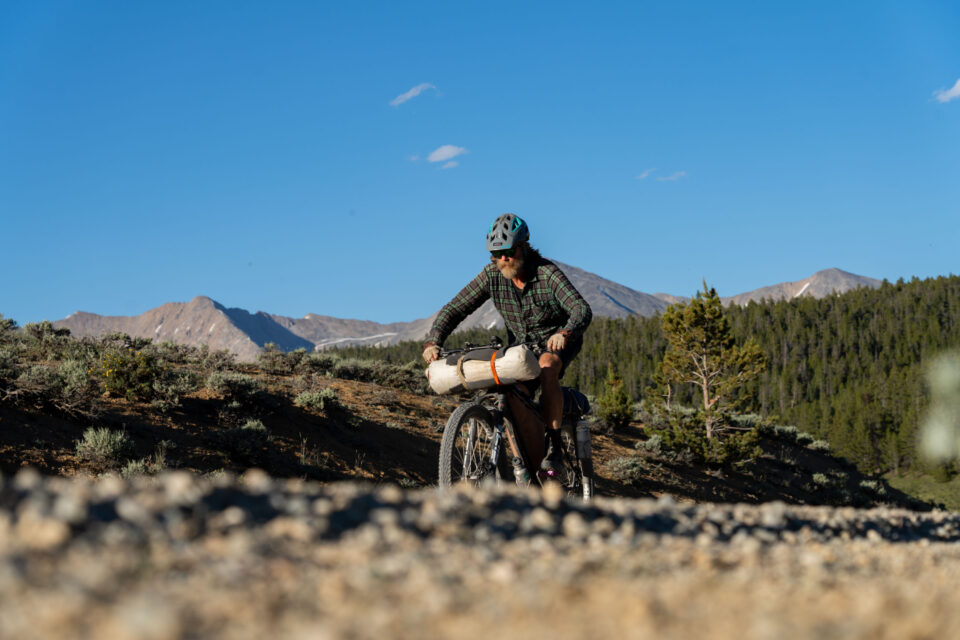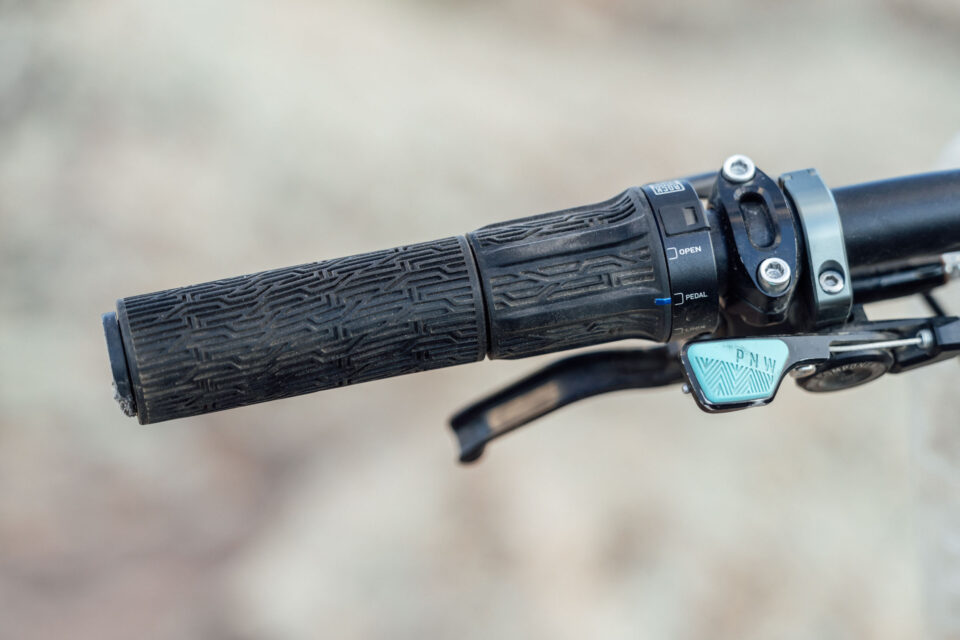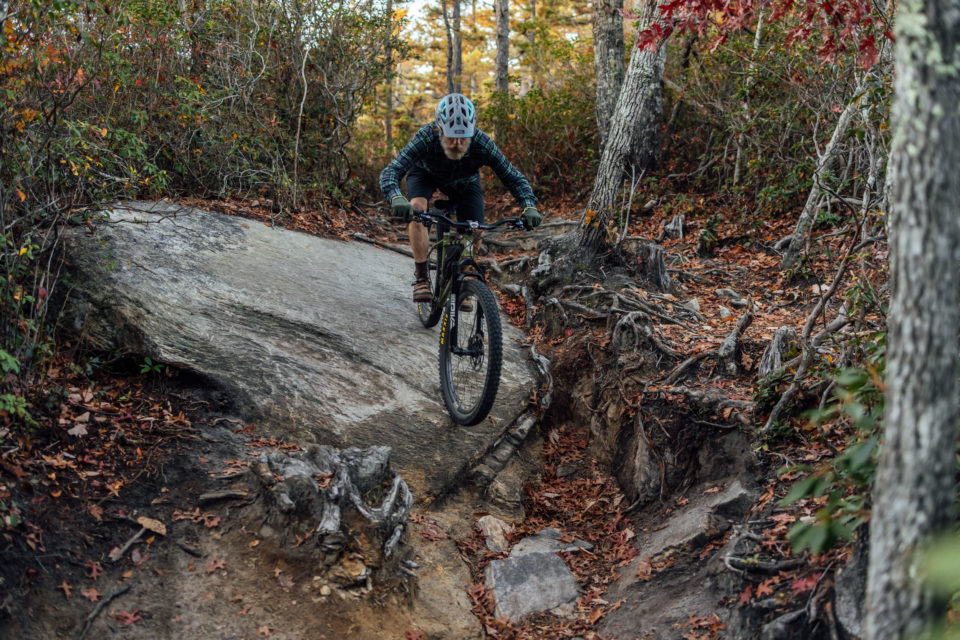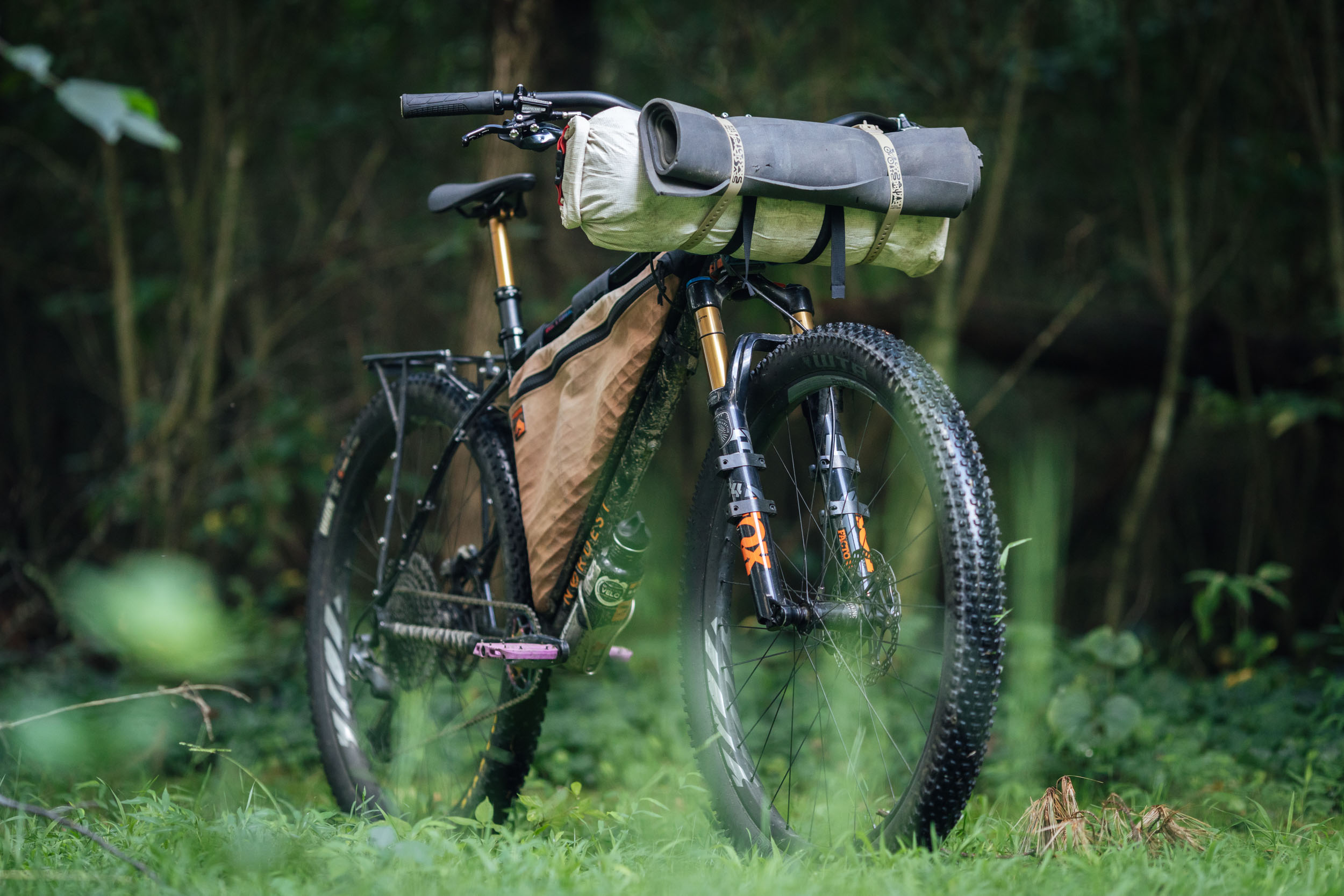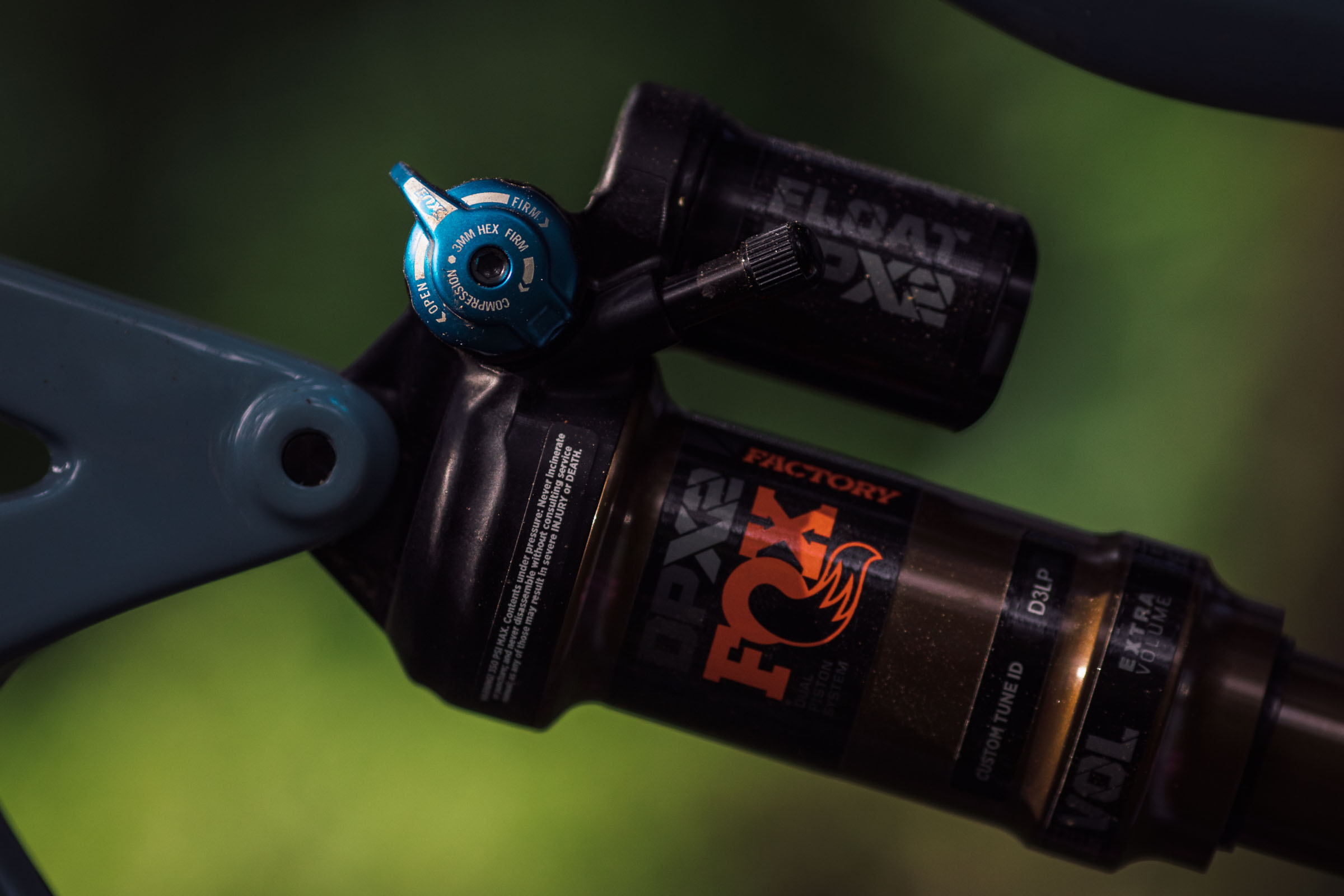Rockshox SID Ultimate Review
Share This
The latest RockShox SID Ultimate just got overhauled with a lockable three-position damper, a redesigned Debonair+ airspring, and a few additional upgrades to make it stronger and lighter. We had the chance to test one throughout more than 300 miles of bikepacking and trail riding in the Colorado Rockies and Appalachian Mountains for this review…
The “XC racing” category of components has always conjured images in my mind of taco-ed 24-spoke wheels, shralped paper-thin 2.0” tires, and ill-equipped jittery parts waiting to be snapped in half on anything other than buttery smooth singletrack. Obviously that’s an overblown preconception. Just watch any modern cross-country race. The technical features and hits that those racers and their bikes rail through at full bore eclipse what 90% of us recreational riders will ever face on our daily rides.
Still, my first experience with a SID (Superlight Integrated Design) fork in 2021 had me worried as I was preparing to drop a fast, technical descent for the first time on the Why Cycles El Jefe hardtail I was testing at the time. I half-expected it to feel like a wobbly pair of sea legs when pumping through the rocks and roots on the way down. To my surprise, it charged through the trail relatively poised and confident, and it felt and performed far better than I expected. At that point, Rockshox had just bulwarked the SID with 35mm stanchions (up from 32mm) and made a few other tweaks to the 2020 iteration. However, it wasn’t without flaws, as evidenced in reports online and from local mechanics.
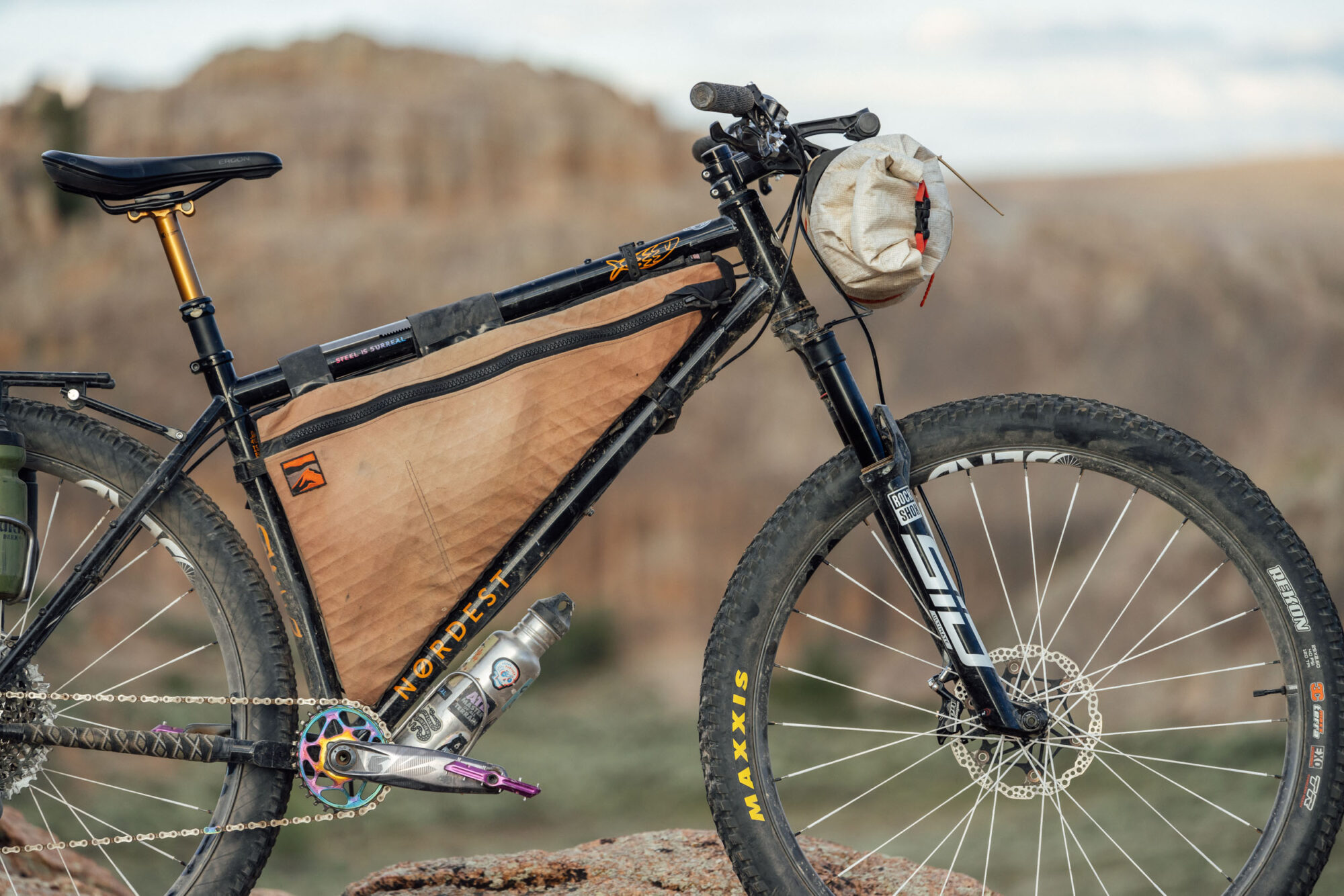
Now, just two years later, the brand announced another round of upgrades to the range of SID suspension products. I had the chance to test the latest RockShox SID Ultimate 3P with the new Twistloc Ultimate remote lockout for a few months prior to its release. Here’s my review after 300+ miles of bikepacking and trail riding.
RockShox SID Ultimate: Stronger, Lighter, Cheaper?
I don’t really look at XC-rated components the same way anymore. Not as a result of my experience with the 2020 SID, but because I’ve been impressed by a few other ultralight/race-oriented products over the years. Most of them squarely align with the first two qualifiers of the old adage, “Light, strong, cheap… pick two,” and eschew the third—not ideal for wallets, but fine for folks who place a priority on reducing weight and are willing to make the investment. The RockShox SID Ultimate is no exception. It sits on the top shelf of the SID range and places a little more emphasis on “strong” as the “jacked-up, longer-travel sibling” to the SID SL, the brand’s ultralight 32mm stanchion-equipped fork. RockShox even teases the nebulous downcountry term in their marketing materials for this fork to hint at more rugged backcountry usage beyond racing. Still, the new SID Ultimate is lighter than its predecessor, despite the brand’s claim that it’s also stronger.
RockShox’s move to 35mm stanchions in 2020 distanced the SID even further from the original model, which debuted in 1998 with frail 28mm stanchions, a whopping 60 millimeters of travel, titanium V-brake bosses, and a needle-valve to adjust air pressure. Still, the bigger stanchions didn’t come without durability concerns. I’ve heard multiple reports from friends and mechanics about common issues. Most notably, stanchion bushing play indicated by a knocking sound that ultimately forces the upper assembly to be warrantied. The new SID aims to fix this problem with longer upper tubes for increased bushing overlap. According to RockShox, “This means both the upper and lower bushings are fully engaged to reduce side loads during impacts, resulting in less friction, and increased long-haul durability.” They actually made the same update to both the Pike and Lyrik for similar reasons, and this upgrade alone might explain the quick turnaround of this range revamp and release.
The other change in the SID chassis comes in the form of a slight tweak to the crown. RockShox introduced the nicely machined crown in the 2020 fork, but the latest model appears to have literally shaved more metal off of the column-shaped bits at the top of each upper leg, giving them a slight hourglass shape. Still, that doesn’t really explain why the new SID Ultimate dropped about 50 grams, especially considering it was updated with a longer upper assembly.
Charger Race Day 2 (3P) Damper
Some of that weight savings could be credited to the new Charger Race Day 2 Damper. It looks relatively similar to the former version, but SRAM claims it was updated to be even lighter. The Race Day 2 comes in two flavors: two-position (2P) and three-position (3P). The 2P has Open and Lock settings, and the 3P damper I tested has Open, Pedal, and Lock. On both, Lock is a true solid lock-out, and the Pedal setting partially firms it up for more pedaling leverage. The only other method of adjustment is a 20-click rebound dial on the right leg that’s turned with an extruding built-in L-shaped Allen key.
Like its predecessor, the new Race Day 2 damper is a bladder damper, which is a sealed system with a rubber bladder that expands and contracts as oil moves through it. That brings up another issue I’ve heard about: the bladder failing, which is usually a result of lack of maintenance and not bleeding it regularly. That being said, we were fortunate enough to put quite a few hard miles on three different SID Ultimate forks over the last few years. We put over 400 miles on one (previous 2020 model), 200 on another, and about 300 on this one. None of them had any issues with the damper or the bushings.
Note that the Charger Race Day isn’t the only popular bladder damper on the market. Fox’s FIT4 is another common one. One downside to the Race Day and new Race Day 2 dampers is that RockShox doesn’t include a replacement bladder with their rebuild kits, so you have to buy an entire damper if it fails, or go through a knowledgeable suspension expert who can install a third-party bladder when getting it serviced. With a fork like this one, having regular maintenance is a must, and having it checked and overhauled before a big trip can prevent issues from arising. Local suspension technician and owner of Collette Machine and Tool Randy Collette remarked, “They are [lightweight] race products and are designed to be serviced more frequently. Less oil equals less weight equals more frequent service.” He added that the key is having it properly set up, “I feel like a properly assembled and bled one with a fitted sealhead could last indefinitely.”
For what it’s worth, RockShox damper service intervals are usually recommended after roughly 200 hours of use. That’s a tall ask, and my unsanctioned method is usually to just have a fork serviced prior to going on a big trip. If something happens at home, it’s not that hard to have it repaired locally.
New DebonAir+ Air Spring
The new SID Ultimate also got a redesigned air spring called the DebonAir+, the same name used for the springs in the Pike, Lyrik, and Zeb forks. However, this DebonAir+ is a little different. The most visible change is the new top-out spring, which has a coil spring rather than a rubber bumper. SRAM claims this prevents hysteresis, the lag when the travel changes directions caused by the build-up delay of damping force. This coil-spring design was conceived to maintain comfort and traction in the initial travel, a quality more relevant to XC trails, dirt roads, and less aggressive riding.

The bigger change is that they added 50% more negative and 16% more positive volume to the air spring, making the fork more supple and allowing more adjustment based on pressure. I set mine up to 20% sag and pretty much left it there. It’s impressive how nice this fork feels on small bumps, which I’ll dig into later.
Prices, Weights, and Features
The new RockShox SID Ultimate is less pricey than most of the other top-end forks available in its class, and oddly, it’s cheaper than the first 26” SID released in 1998, kind of—that one sold for about $700, which equates to roughly $1,300 in today’s dollars, according to an inflation calculator. Less is less. The current model lacks the high-speed and low-speed compression adjustments you can find on the Pike (Charger 3) and Fox 34 (Grip2), but it’s far lighter as a result.
To illustrate weights, prices, and features, I put together this chart to show a range of 120mm forks that are available and tacked in a couple of forks that can be set up with a 120mm air spring after purchase. It’s a versatile and popular travel length, towing the line between trail riding, endurance cycling, and bikepacking. As you can see, the SID Ultimate is also the lightest option on the market.
| Model | Travel | Stanchion Size | Damper Positions | True Lockout | Remote Option | Weight | Price |
|---|---|---|---|---|---|---|---|
| Rockshox SID Ultimate | 110/120 | 35mm | 3 | ✓ | ✓ |
3.27 lbs
1,485 g
|
$999 |
| Fox StepCast (Factory Fit4) | 100/120 | 34mm | 3 | ‡ | ✓ |
3.30 lbs
1,496 g
|
$1,019 |
| Ohlins RXF34 m.2 | 120/130 | 34mm | * | ‡ |
3.74 lbs
1,698 g
|
$1,145 | |
| Mannitou Mattoc Pro | 120/140 | 34mm | * |
3.81 lbs
1,730 g
|
$1,049 | ||
| Fox 34 Factory (Fit4) | 130/140† | 34mm | 3 | ‡ | ✓ |
4.14 lbs
1,879 g
|
$1019 |
| Fox 34 Factory (GRIP2) | 130/140† | 34mm | * |
4.14 lbs
1,879 g
|
$1,039 | ||
| Rockshox Pike Ultimate | 120-140 | 35mm | * |
4.16 lbs
1,885 g
|
$1,054 | ||
| Marzocchi Bomber Z2 | 100-140 | 34mm | 3 | ‡ |
4.46 lbs
2,025 g
|
$519 |
- * Multi-position/variable adjustments for damper compression
- † Fork only sold in stated travel lengths but other length airsprings are available for purchase/installation, including 120mm
- ‡ FIT4 isn’t a true/solid lockout, but the firm setting comes close and improves pedaling efficiency; Ohlins “Climb” switch setting is not a lockout, but improves pedaling efficiency; Marzocchi’s (Fox) Firm switch is similar to FIT4.
On the Trail
On my initial ride with the SID, the first thing I noticed was the weight savings. It replaced a ~2019 Fox 34 Factory fork on my Nordest Sardinha. That fork weighs 2,045 grams (4.5 pounds), so I effectively removed 1.2 pounds from the front end of the bike, which is not insignificant. It’s like upgrading to carbon wheels, a carbon handlebar, a lighter tire, and more, all in one go. It became a different bike, requiring me to position more weight over the front end, which is a good habit to get into anyway. It also negated nearly half of the weight of my handlebar bag weight when bikepacking.

I set up the SID based on roughly 20% sag, which registered 75PSI on the gauge with my 28-pound bike and 165-pound body. The rebound was dialed at the halfway point with 10 clicks, and I pretty much left it there, turning it down a couple of clicks slower at one point. For the record, I’m not someone who obsesses with perfecting suspension settings on forks that have a lot of adjustability. I usually set the dials in the middle position and go, occasionally making some small tweaks to improve traction or feel on the trail.
With forks like the Fox 34 or RockShox Pike, it’s honestly hard to discern the effects of one click of low-speed compression or high-speed compression adjustment. The SID doesn’t have that option, which is kind of refreshing. Rebound speed and air pressure are the only two variables, so you’re left with how this fork was engineered. I later checked the suggested settings on RockShox Trailhead, an app to reference suspension setup. It recommended 79PSI and six clicks from slow.
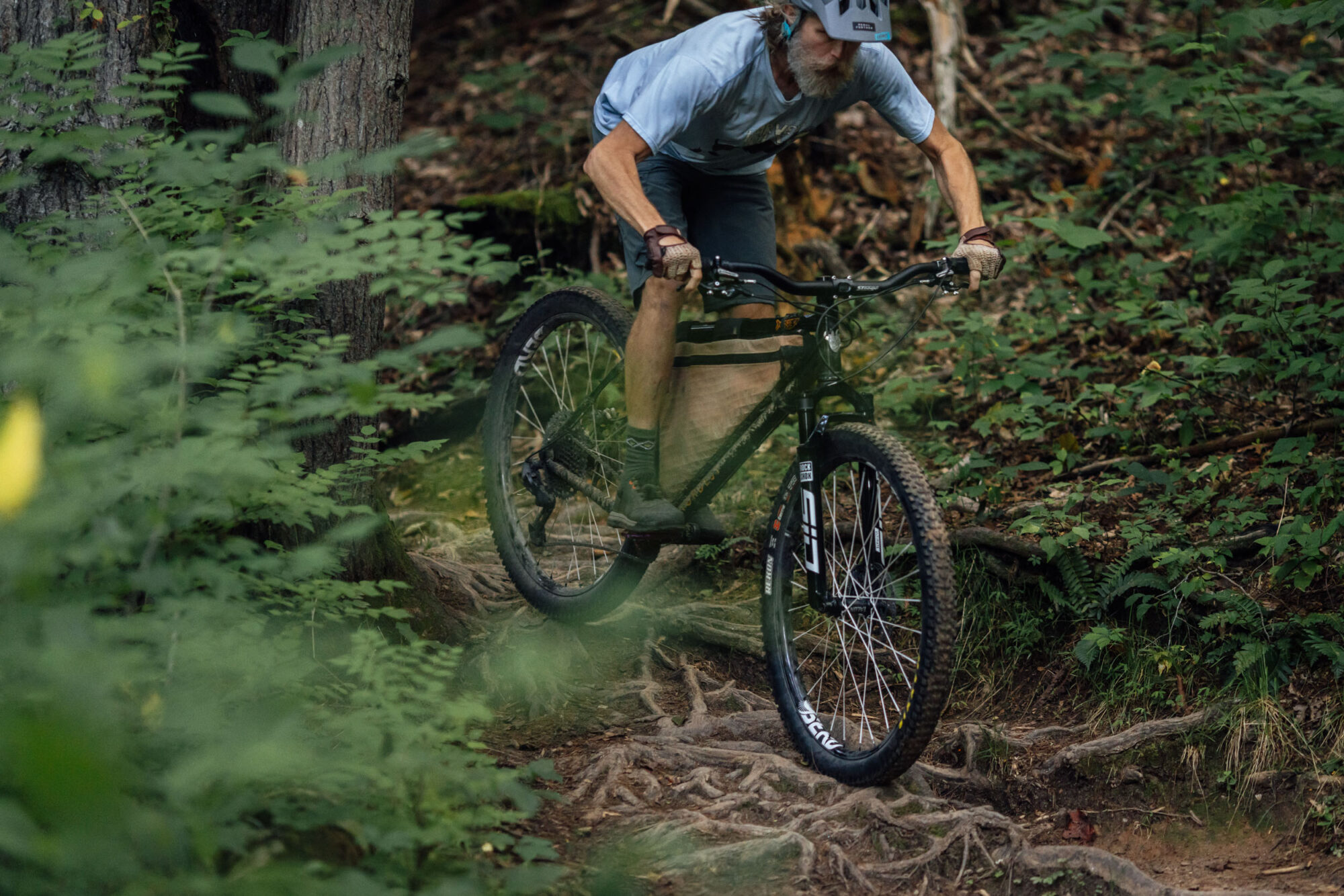
Speaking of adjustments, one thing that gets under my skin about some forks is how they can magically feel off from one ride to the next. It’s almost as if they suddenly go way out of tune due to barometric pressure or my failing mind playing tricks on me. I often find myself re-checking sag, adjusting air, and wanting to fiddle with compression settings. This hasn’t happened to me with the SID, which has generally felt pretty consistent. That may be partially due to its simplicity and the lack of placebo at work; there’s no intimidating compression dials to adjust—or lead you to think that they somehow went awry—so the only thing that can be changed is air pressure.
The SID’s performance on small bumps impressed me out of the gate. It’s better than my Pike Ultimate in that regard and feels more like the Fox 34. It does a great job at buffering small and medium-sized rocks and roots when you’re just pedaling along, climbing, or traversing across a bumpy trail. It also feels pretty great on dirt roads and gravel for the same reasons.
Twistloc Ultimate
I also tried the new Twistloc Ultimate this go round, which RockShox claims offers riders better dropper post compatibility and a cleaner cockpit based on some structural tweaks.
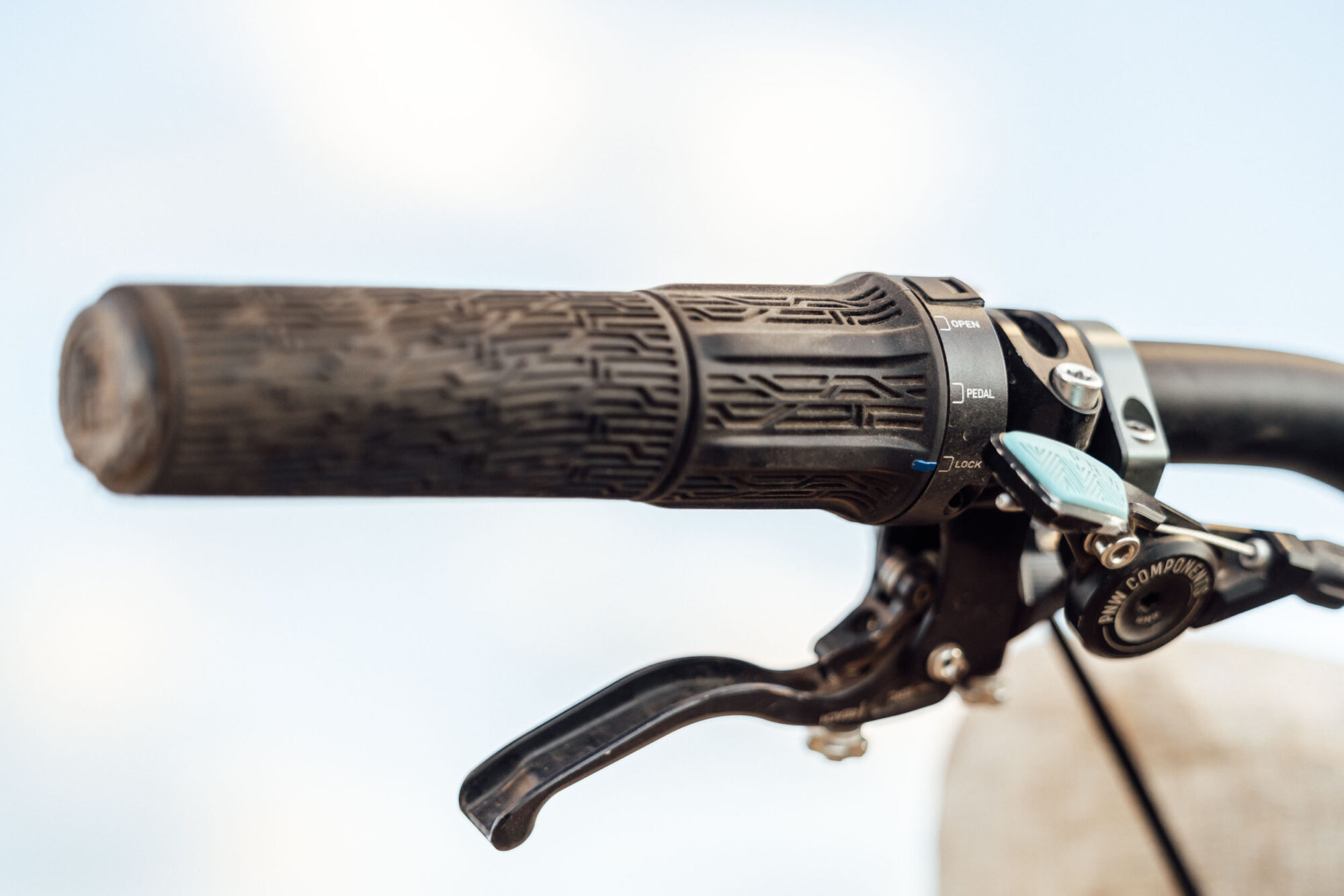
This is only the second time I’ve used a remote lockout and the first time I’ve used a twist controller for anything in a long while. I was expecting to be accidentally engaging it all the time, but that wasn’t the case. They did a good job with the proportions and tension between the shifts. It requires a good amount of force and has a satisfying click when engaged into the Open, Pedal, or Lock settings. There’s also a vivid blue tick that makes it easy to see the position.
As expected, I didn’t use it as much as I could or should have; the SID Ultimate pedals pretty efficiently without locking it out. That being said, when I did flip it into Pedal mode for a climb, the efficiency was noticeably improved. At first it felt a little too springy; that’s when I backed the rebound down a little slower. I came to appreciate being able to switch into the Pedal mode on longer loaded climbs during our five-day bikepacking outing in Colorado. I rarely used the full Lock, but that would be great for a singlespeed, which is where this fork is going next.
The textured grips are comfortable enough, but you can also get them in a smooth texture. That brings up my one con with using this remote lockout interface: it limits ergonomic grip options. I can no longer use Ergon GA3s, at least on the left hand.
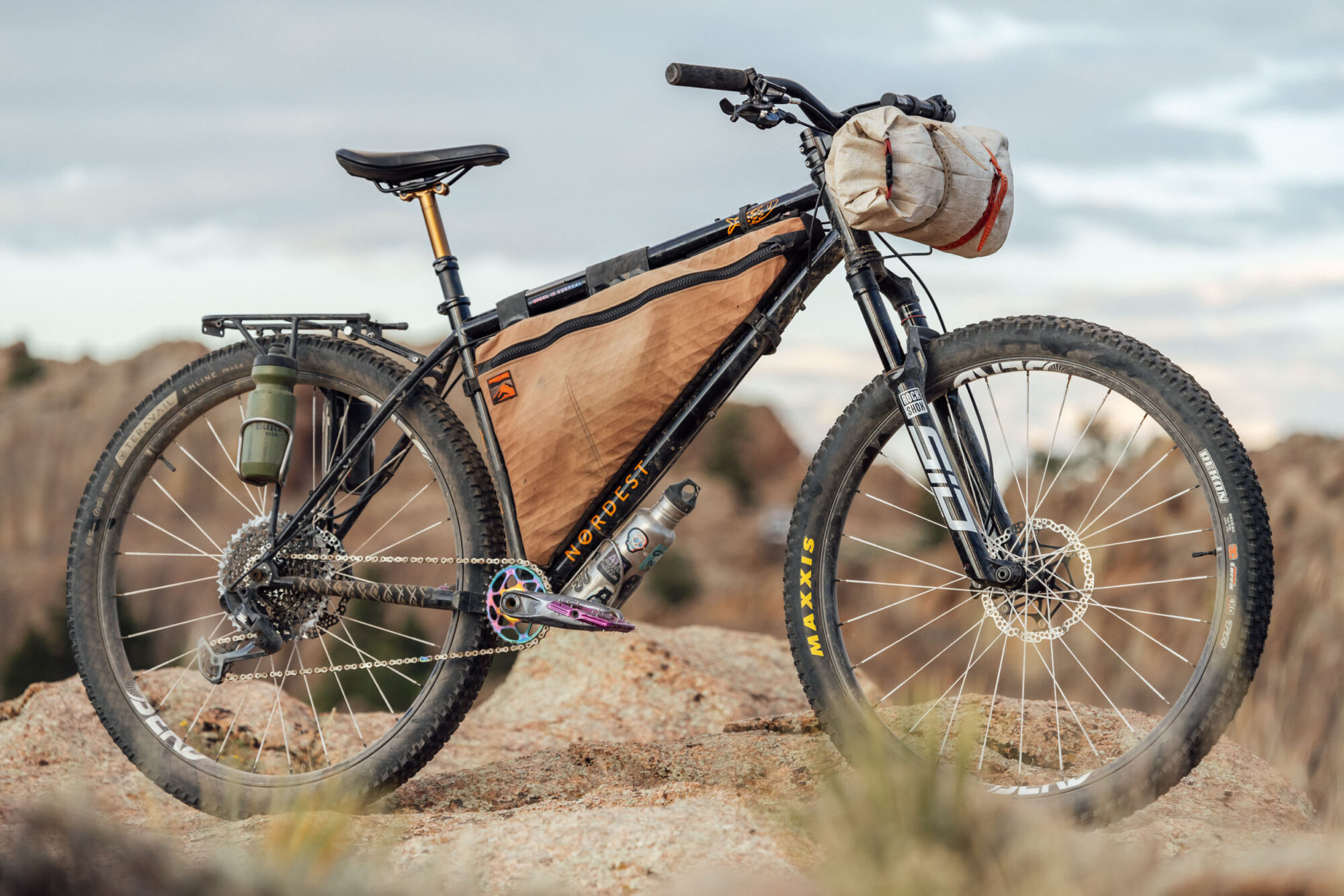
SID vs. Pike
That brings me to the other RockShox fork that I’ve spent a lot of time with, the Pike. I have the latest Pike Ultimate, and I’ve moved it from bike to bike and changed it from 120 to 130 to 140mm of travel. The most obvious difference between it and the SID is the weight. Although both have 35mm stanchions, the Pike is a beefier fork overall, with a thicker lower arch and beefier tubes to give it a stiffer chassis.
Another contributor to the added weight on the Pike is the damper. The Charger 3 is more sophisticated than the Race Day damper with a lot more tunability built into it. It has a self-bleeding internal floating piston design, which requires less maintenance and is arguably more reliable than a bladder damper as it doesn’t rely on an expanding rubber bladder to manage oil movement. However, unlike the SID’s Race Day 2 damper, the Charger 3 doesn’t have a Lock or a Pedal mode, a feature that’s invaluable to folks who are racing or anyone wishing to maximize climbing efficiency.
The Pike is better suited to extended riding on rugged and technical terrain than the SID. The Pike’s Charger 3 damper designed to be overworked and has better internal means of regulating fluid and air built in to accomplish this. In short, it’s more tuned to manage bigger hits as they happen in faster succession. That translates to less upper body fatigue and better performance on long rough descents. However, I found the SID Ultimate and the new Race Day 2 damper to be quicker and comfortable on terrain where the fork is engaged at the top and middle of its travel. And with the Pedal mode and reduced weight, its quickness and efficiency make it superior on the climbs.
The Pike has a few other features that the SID lacks. One is the pressure relief valves, buttons on the legs that purge air pressure build up in the fork caused by variations in altitude or temperature. I’ve used these quite a bit on the Pike, and they work, particularly when traveling. The Pike also has the new ButterCups tech. These elastomer pucks live at the end of the damper and air spring shafts and buffer high-frequency vibrations, such as tire buzz (similar to the ones used to eliminate chainsaw motor vibrations). I honestly thought this might be a bit of a gimmick at first, but I was able to discern the difference when riding it back to back with an older Pikes.
- Model Tested: 2024 Rockshox SID Ultimate
- Actual Weight: 1,485 grams
- Place of Manufacture: Taiwan
- Price: $999
- Manufacturer’s Details: SRAM.com/RockShox
Pros
- Lightest fork in its class; nearly a pound less than the Pike or Fox 34
- Performs beyond its call of duty and doesn’t shy away from more aggressive trail riding
- New air spring and damper provide a nice small-bump feel, which is complementary to bikepacking and long-day rides
- Good mid-travel support and traction
- Remote lockout Twistloc works very well and doesn’t get in the way
- Short axle-to-crown height can be used as a fit advantage
Cons
- No ButterCups, pressure relief valves, or compression dials like those on the Pike
- Bladder for damper not included with rebuild kit, making extra waste for those not willing to install or familiar with third-party options
- Twistloc limits ergonomic grip options
Wrap Up
Over the last couple of years I’ve been surprised to see the RockShox SID specced on bikes that I wouldn’t expect to see it on, such as Pipedream Cycles owner Alan Finlay’s personal Sirius S5, an ultra-progressive short-travel hardtail. It’s kind of broken out of its niche, so to speak, and picking the ideal fork isn’t as clear-cut as it once was.
With that, let’s wrap things up by trying to figure out who the RockShox SID is for. First and foremost, it’s a shoe-in for anyone racing, attempting FKTs, or taking on other such speed-oriented mountain bike efforts that are a step beyond what’s doable on the 32mm stanchion SID SL. It automatically removes nearly a pound of weight from the high-end Pike, so it’s something of a no-brainer middle-ground for those types of exploits. However, there’s a significant contingent of folks who don’t race and who don’t spend most of their saddle time riding super aggressive trails. And when you factor in that the SID is only for bikes in need of a fork in the 110-120mm travel range, that narrows it down even further. It’s all about priorities, I suppose, considering factors such as weight and efficiency vs. tunability and features, small-bump performance vs. proficiency on rugged and chunky terrain, and the ability to control pedal leverage on the fly vs. extended downhill prowess.
It’s a tough call, really. I’ve been quite impressed by the new Rockshox SID Ultimate and would consider it for any 120mm bike. The improved small-bump performance was immediately noticeable, and like its predecessor, it handles rough trails surprisingly well, although not as handily and fatigue-less as its bigger siblings. It also makes a great fork for bikepacking when you’re trying to keep weight to a minimum and lighten the front end of the bike. The big question right now is durability. So far, we haven’t had any issues, but only time will tell. I’m in the process of building up a more progressive hardtail review bike where the SID will live next, and I’m excited to put more miles on it and push it even further.
Further Reading
Make sure to dig into these related articles for more info...
Please keep the conversation civil, constructive, and inclusive, or your comment will be removed.













